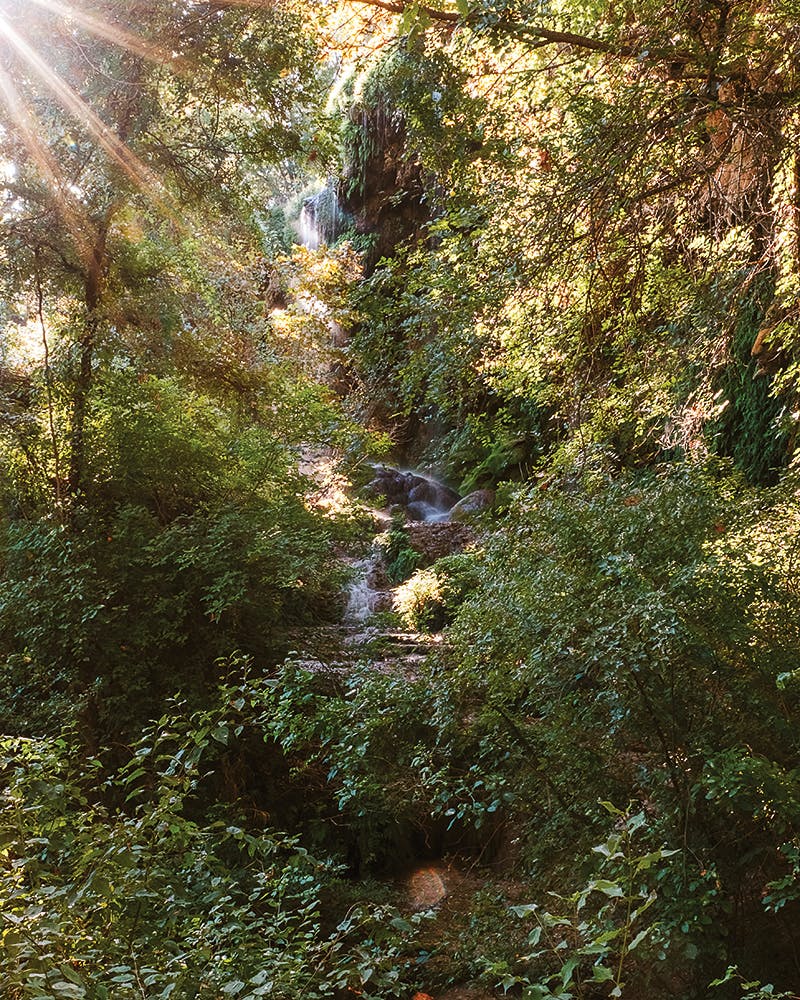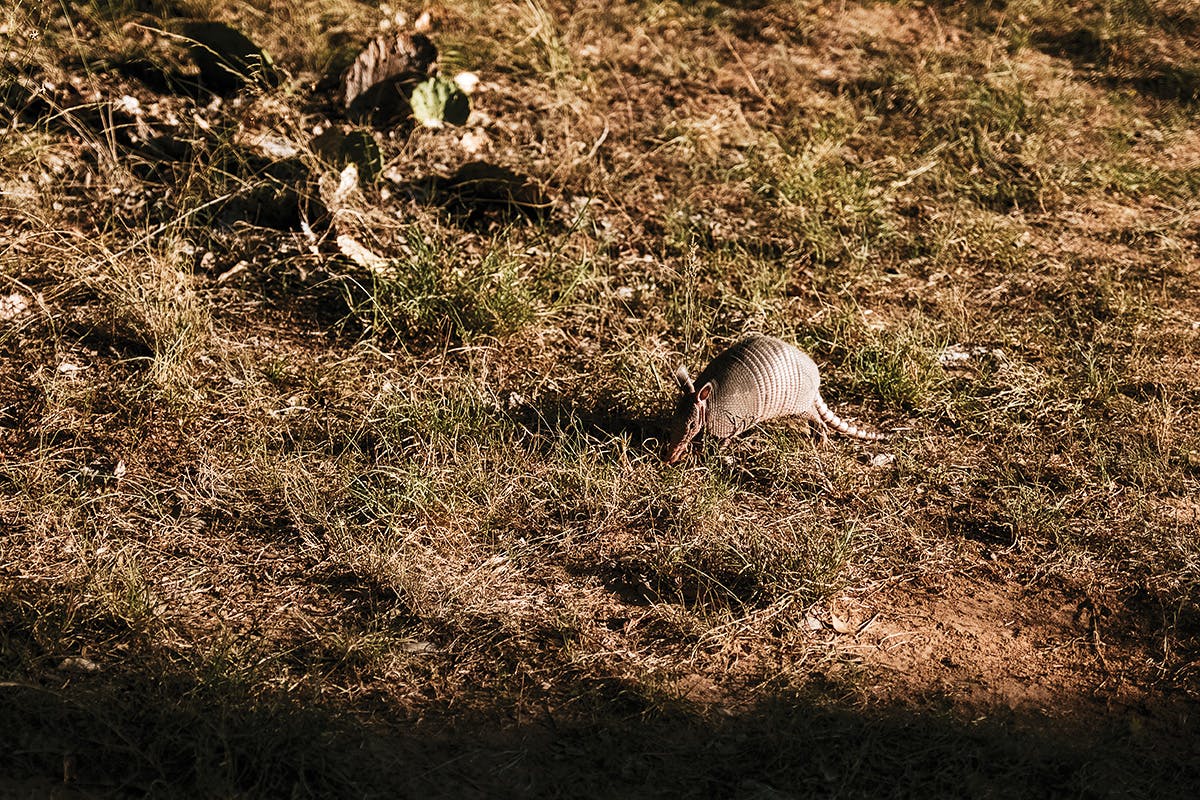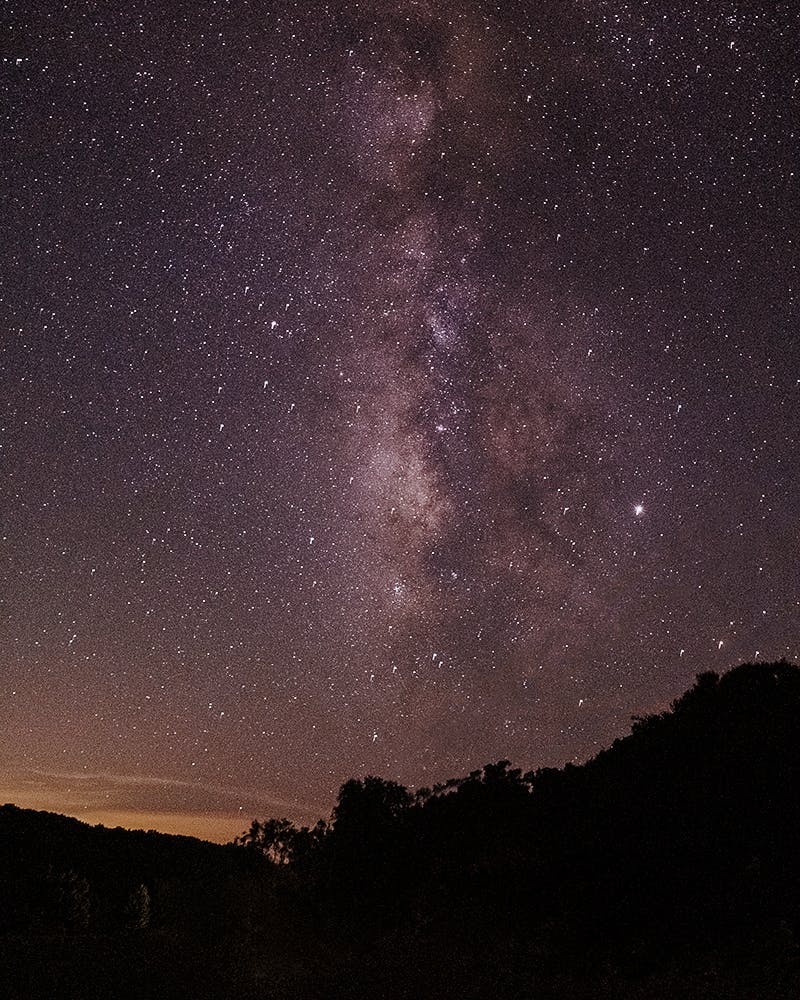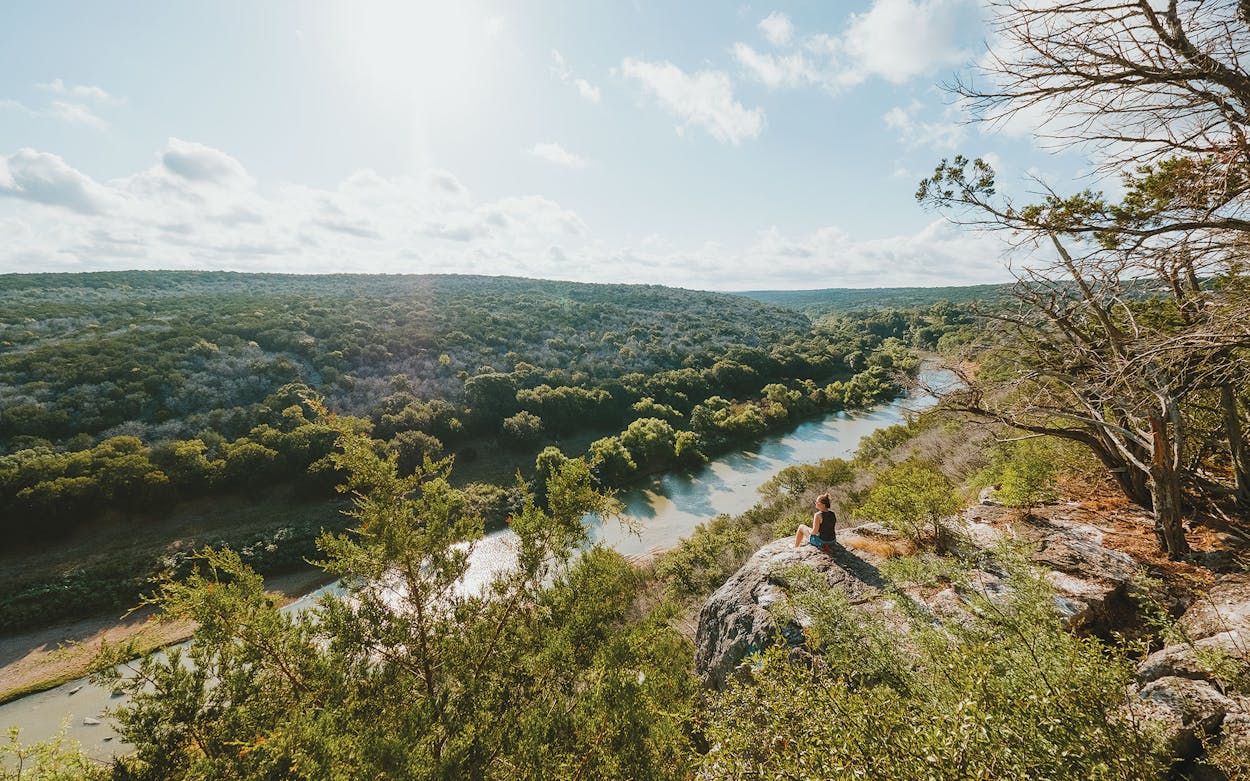“I had no idea this existed in Texas.” Almost every first-time visitor to this Central Texas park, myself included, expresses some version of that sentiment. Named for a noteworthy crook in a mighty river, Colorado Bend, located about two hours northwest of Austin, is a big, beautiful landscape remarkable for its variety of geographical features. Though that’s not immediately apparent. County Road 442, the only road into the park, takes you on a winding ride through the tiny town of Bend (last stop for necessities), over lazy Cherokee Creek (which can rage in heavy rains, keeping wannabe park visitors out and actual visitors in), past somnolent black cattle, and into a wilderness that was formerly ranchland and fishing camps (and at one time the home of about three hundred cedar choppers, those independent-minded settlers with Appalachian roots). As you drive along, the land outside your windows appears to be merely a nicely preserved swath of the rocky, river-carved, cedar-studded terrain that characterizes so much of the Hill Country.
But you soon realize that Colorado Bend is a veritable laboratory in which to study the geological upheaval that has long characterized the area. The park and its environs are what you get from a half-a-billion-year marriage of water and rock shaped by external forces and internal pressures (also known as erosion and the Llano Uplift). The 5,328-acre area encompasses not only six miles of the Colorado River but also labyrinthine caves and sheer canyon walls, crystal-clear springs and sparkling pools, and, most notably—the feature that prompts that “I don’t think we’re in Texas anymore” feeling noted above—a waterfall that people liken to something you might see in Costa Rica or Hawaii.
Unfortunately, I’ll have to take their word for it, because I and my long-suffering travel buddy Emily managed to miss this don’t-miss attraction. Poor planning on our part and this autumn’s unseasonably high temperatures (does that even mean anything anymore?) conspired to keep us from making the three-mile round-trip trek to Gorman Falls, which we hear is an entirely unexpected, almost incongruous, wholly magical sight. The waterfall is variously described as anywhere between sixty and seventy feet high; even the park’s educational materials contradict one another, presumably because Gorman is what’s often called a living waterfall, always changing as currents of calcite-saturated spring water splash over rock and moss and algae, leaving crystals that accumulate over thousands of years into layers of porous tufa (sometimes called travertine). Getting there involves navigating long stretches through treeless prairie, “treacherous rocky terrain” (per a helpful park poster), and a precipitous, slick, cable-assisted decline. “I’m a fit 66 year old,” writes an AllTrails commenter, “but still had to go down on my butt sometimes.”

Well, she put us to shame. Emily and I did start down the path one morning, growing more and more uneasy as we passed one increasingly remonstrative warning sign after another. “Got water and a map?” (One liter per mile is recommended.) Nope and nope. “Sure you’re ready?” Um . . . We’d been told that no trail in the park sees more rescues than this one, particularly when it’s hot, and as fun a story as that would have made, we reluctantly turned around. As with so many activities in Texas (exercising, wearing clothes, breathing), this hike is best attempted in cooler temperatures. So, dear reader, let’s imagine together (it helps to look at the photo on this page) a Frederic Church–style scene, preferably painted in the spring, of a veritable cathedral of fragile tufa blanketed in green moss and dainty maidenhair ferns, sheltered by elm trees and entangled vines, bathed in clear water spilling down to a glassy pool, cloaked in a gray-green mist dancing through dappled sunlight . . .
It’s not hard for me to imagine, actually, because Emily and I saw something similar the day before on a more successful outing, a short kayak trip down the languorous Colorado River, which almost takes a back seat to the park’s flashier natural wonders. You can camp right on its banks (as we did) and forget that it’s rolling along behind the scrim of thick grass if not for the occasional splash of a leaping fish (and the towering canyon wall on the opposite side). But it’s there for exploring, and by all manner of recreational watercraft, as we discovered when an armada of boisterous, music-blasting jet-skiers roared up behind us, politely slowing their roll to keep from tumping our kayaks over. And if you like to fish, the Colorado serves up blue catfish, freshwater drum, and lots of bass.
But aside from its many charms, this placid waterway is how you get to Post Oak Falls. On private land and visible only from the river, Post Oak is a little smaller than Gorman, but surely it’s just as captivating. There’s a perfect rock out in the water for tying up your boat (and jumping off of in the summer), the better to admire giant, lava-like sheaths of tufa that look as if they solidified mid-fall. Profuse greenery clings to a craggy surface pockmarked with shadowy recesses ideal for active imaginations. It’s like a backdrop for one of the Lord of the Rings movies. The park rents kayaks, or you can do as we did and tag along with a guide, like Heather Nichols, from Nichols Outdoor Adventures, who pointed out great blue heron nests, told us tales of shotgun-toting landowners, and patiently waited while the wind, current, or our own ineptitude propelled our kayaks in all directions but downriver.

Speaking of Nichols Outdoor Adventures, you’ll need to sign up with that outfit if you want to see yet another of the park’s don’t-miss features: the caves. There are some 250 known “humanly passable” caves within the boundaries of Colorado Bend, and Nichols offers three tours: Discovery, Adventure, and Climbers. With the first demanding little more than an easy, upright stroll and the last requiring climbing, we split the difference and went with the Adventure tour, which took us to the innocent-sounding Turtle Shell Cave. It is not. It is a narrow crack in the ground requiring a steep, vertical descent and then hands-and-knees traveling from there. And that’s not the worst of it. Emily and I had barely made it into the chasm that had swallowed up our guide, Jeff Nichols (husband of our kayak guide, Heather), and a young girl and her father who were part of our group, before we heard the girl’s panic-stricken cry, “Whoa, that’s a lot of daddy longlegs!” “Sweet mother,” groaned Emily behind me. “Just stay the course,” said Jeff, up ahead. One or two daddy longlegs in a corner are kind of cute, a literal vibrating carpet on a wall that you have no choice but to brush up against—not so much. But it’s all worth it if you survive that hairy hell and embrace all the twists and turns and contortions required of your body (“Stay as flat as you can till your hips clear the ceiling” is something I’ve never been told before and do not expect to be told again).
Some of you will forget all about your own exertions and be enchanted by the more herculean exertions that have been going on beneath your feet (or hands and knees) for eons: the interminable drip-drip of centuries-old stalactites and stalagmites (including one that looks just like a large turtle shell); an extinct aquifer passage; still-glowing calcium phosphate left over from bioluminescent sea creatures who lived four to five hundred million years ago. And everywhere dank, dusky hollows that teem with reclusive, silent, determined life: fat, golden-hued crickets, still as statues, hanging upside down from the “ceiling”; a small, plump mouse-eared bat shivering for warmth in a favorite hidey-hole; a little black toad dining on a fungus-covered stick.


And some of you will remain dubious. As we emerged, sweaty and steamy, decorated with mud and bat poo and who knows what else, Emily summed up the whole experience in a way many before her surely had: “Well, I’m glad I did that. I don’t ever need to do it again.”
As dark (or gloomy) and peaceful (or terrifying) as the cave was, our hike on Colorado Bend’s Spicewood Springs trail was a breath of fresh air as we wandered alongside and crisscrossed the namesake crystal-clear stream, which cascades, in diminutive waterfalls, from rocky ledge to rocky ledge, intermittently pooling into small emerald-green lagoons (the deepest nine feet), before joining up with the Colorado River. Pearly-scaled fish darted about, giant blue-and-yellow swallowtail butterflies alighted here and there, and I nearly stepped on at least one smallish snake, which, fortunately, was busy doing its darnedest to swallow a dead leopard frog. The park has 35 total miles of trails, most for both hiking and biking (Colorado Bend is a favorite among mountain biking enthusiasts). That was about 30 too many for our brief visit, but we did get recommendations for the Tie Slide trail, which offers a lofty perch from which to admire the river two hundred feet below, and the Tinaja trail, rated by the park as “very challenging,” which boasts its own lovely vistas as well as the water-filled rock “jar” that gives the trail its name. We decided to tackle those when we come back for Gorman Falls, sometime before the weather starts heating up again in April.

On our last evening, about all we had the energy for was a leisurely stroll, accompanied by furtive armadillos and families of white-tailed deer, back to our riverside campsite, where we collapsed to stare up at the moon in all its full, sleep-depriving glory and ponder the inscrutable universe above and below our flimsy tent.
This article originally appeared in the December 2019 issue of Texas Monthly with the headline “Middle Earth.” Subscribe today.
- More About:
- Parks & Recs









